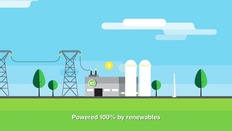- EverWind and Uniper signed an MOU for 500,000 tonnes of green ammonia annually.
- Point Tupper facility in Nova Scotia to start operations in early 2025.
- The project involves over $600 million in infrastructure investment.
- Further phases will produce over ten million tonnes of green ammonia annually.

Project Overview
EverWind Fuels Company and Uniper have signed a Memorandum of Understanding (MOU) for Uniper to purchase 500,000 tonnes per annum of green ammonia from EverWind’s initial production facility in Point Tupper, Nova Scotia. This facility is in advanced stages of development and is expected to reach commercial operation in early 2025, marking the first green hydrogen hub in Atlantic Canada.
Strategic Significance
The MOU with Uniper, along with another simultaneous offtake MOU, commits EverWind to one million tonnes per annum of future green ammonia production at Point Tupper. This agreement was announced ahead of a green hydrogen/green ammonia exhibition in Stephenville, Newfoundland and Labrador, attended by key political and industry leaders from Canada and Germany.
Economic and Environmental Impact
The project is expected to attract billions of dollars in new investment and create new jobs in Nova Scotia. It aims to establish Nova Scotia as a leading hub for green hydrogen production, supporting the province's decarbonization goals and contributing to global energy security by reducing reliance on fossil fuels.
International Collaboration
The MOU is part of a broader Canada-Germany Hydrogen Alliance, which will be formalized through a joint Declaration of Intent. This partnership underscores the commitment of both countries to the global energy transition and the development of a sustainable energy supply chain.
Facility Details
EverWind’s Point Tupper facility benefits from over $600 million in existing infrastructure, including an ice-free deep-water port. The facility will produce green hydrogen and convert it into green ammonia using a mix of certified green power and onshore wind power, with future phases powered by offshore wind.
